- Learning time
- 20 minutes
- First play time
- 90 minutes
Megacity Oceania
Designed by: Jordan Draper,Michael Fox
In the future, we may build cities atop floating platforms on the ocean, as land becomes whatever apocalyptic anti-idyll you care to think of. Will we assemble these cities on shore and then push them into place with our hands? That’s possibly less likely, but it does make the experience of Megacity Oceania a little more fun.
Outside of one or two wrinkles over parks (green hexes) and how the game ends, the play is pretty straightforward. On your turn you take two actions (-three in a two-player game) which can be claiming the aforementioned platforms (-various coloured hexes) grabbing the contracts (various coloured cards) or delving into the enormous bag of plastic city pieces (glass, stone and concrete) and pulling out three of them. The contracts tell you what kind of building to build using the pieces: instead of a standard turn in the game, you can instead take the special action of delivering a building to the growing conurbation of tiles in the middle of the table: the contracts demand a certain criteria (how many pieces; height; often some kind of design specific like an arch or no glass) and every building piece you use must connect to the rest of the building in some way. Additionally, the platforms have three spots denoting the supply of gas, electricity and fresh water: you building must connect to those too, whilst not blocking the vent (also on the platform).
Assuming you’ve managed to meet the criteria, you get a point for delivering the building – it mustn’t collapse en route! – and whatever points are shown on the contract, which is now completed. There’s bonus points for being next to parks, and bonus points – at the end of the game – for most of a certain type of building, a diversity award for having built all types, and an award for the tallest building. When all the contracts are claimed, four specialist final contracts come out, giving the players a chance for one last hurrah before their time runs out. The player with the most points is awarded the title of best architect/juggler/balancer person!
The guru's verdict
-
Take That!
Take That!
Unless someone can't help themselves bashing the table in excitement, the interaction here is indirect: there are a set of overlapping races in a way, with players possibly trying to get majorities in a certain type of contract, but there's very little to get hot under the collar over. There's actually a feeling of collaboration as you collectively build the city.
-
Fidget Factor!
Fidget Factor!
Low - Megacity, once you get the hang of the basics, is pretty fat-moving.
-
Brain Burn!
Brain Burn!
The only burning here is the cosy fireside variety: decisions are present, and certainly relevant, but it's nothing too onerous on the mind.
-
Again Again!
Again Again!
The novelty may wear off after a few plays, but set-up supplies variety, as does the drawing of buildings from the bag. It's not a game that feels hugely different over multiple visits, but it's nice and light.

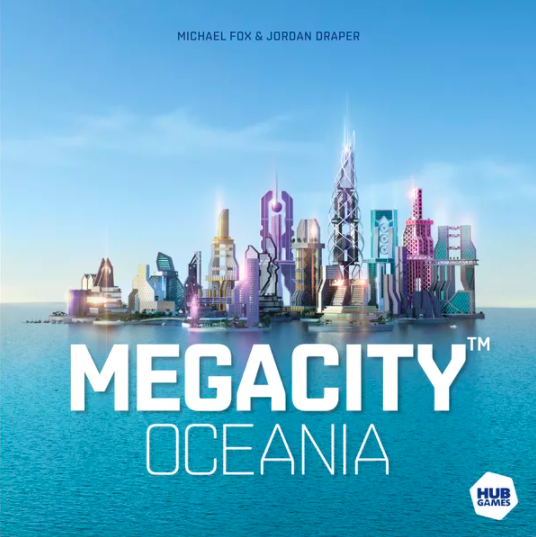

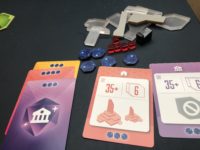
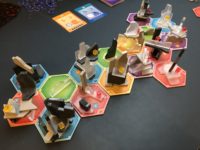
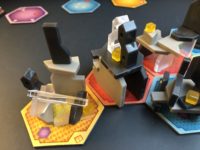
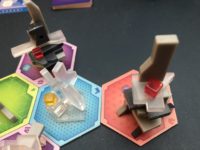
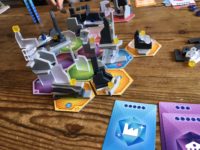


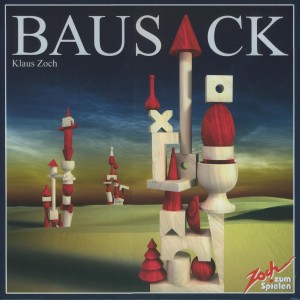


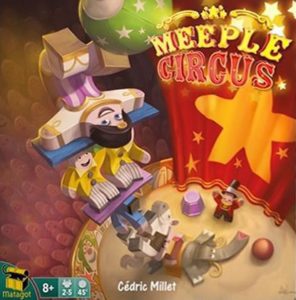

Sam says
A strange curio, this one, with the puzzle of what to build not much of a challenge for the puzzlers, and the dexterity element of the stacking pieces taking place sort of piecemeal, individually, often lacking the inherent tension of fun collaborative stacking games like Men at Work or the brinkmanship of Bandu. It feels like a graft of two different types of games where you can feel the joins. What it does have going for it though is that it it's puzzly enough for a good family (or light adult) game, and the construction element is just tense enough to speckle the story with little pockets of drama without anyone in danger of being knocked out of the game. Mainly, though, is the fact it just looks beautiful on the table - even if the game beneath that visual extravaganza isn't quite as amazing, there's something very satisfying about seeing what you've built together in just 45 minutes or so.